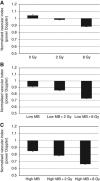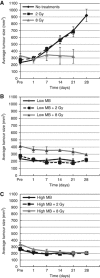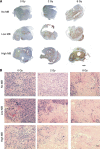Microbubble and ultrasound radioenhancement of bladder cancer
- PMID: 22790798
- PMCID: PMC3405216
- DOI: 10.1038/bjc.2012.279
Microbubble and ultrasound radioenhancement of bladder cancer
Abstract
Background: Tumour vasculature is an important component of tumour growth and survival. Recent evidence indicates tumour vasculature also has an important role in tumour radiation response. In this study, we investigated ultrasound and microbubbles to enhance the effects of radiation.
Methods: Human bladder cancer HT-1376 xenografts in severe combined immuno-deficient mice were used. Treatments consisted of no, low and high concentrations of microbubbles and radiation doses of 0, 2 and 8 Gy in short-term and longitudinal studies. Acute response was assessed 24 h after treatment and longitudinal studies monitored tumour response weekly up to 28 days using power Doppler ultrasound imaging for a total of 9 conditions (n=90 animals).
Results: Quantitative analysis of ultrasound data revealed reduced blood flow with ultrasound-microbubble treatments alone and further when combined with radiation. Tumours treated with microbubbles and radiation revealed enhanced cell death, vascular normalisation and areas of fibrosis. Longitudinal data demonstrated a reduced normalised vascular index and increased tumour cell death in both low and high microbubble concentrations with radiation.
Conclusion: Our study demonstrated that ultrasound-mediated microbubble exposure can enhance radiation effects in tumours, and can lead to enhanced tumour cell death.
© 2012 Cancer Research UK
Figures





References
-
- Blakey DC, Westwood R, Walker M, Hughes GD, Davis PD, Ashton SE, Ryan AJ (2002) Antitumour activity of the novel vascular targeting agent ZD6126 in a panel of tumour models. Clin Cancer Res 8: 1974–1983 - PubMed
-
- Cooney MM, van Heekcheren W, Bhakta S, Ortz J, Remick SC (2006) Drug insight: vascular disrupting agents and angiogenesis-novel approaches for drug delivery. Nature Clin Prac Oncol 12: 682–692 - PubMed
-
- Feron O (2004) Targeting the tumour vascular compartment to improve conventional cancer therapy. Trends Pharmacol Sci 25(10): 536–542 - PubMed
Publication types
MeSH terms
Substances
LinkOut - more resources
Full Text Sources
Medical

